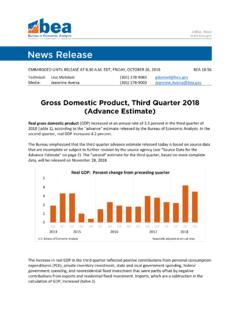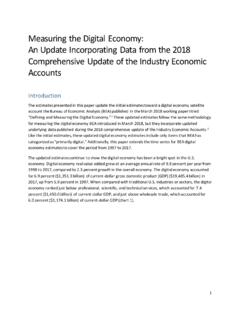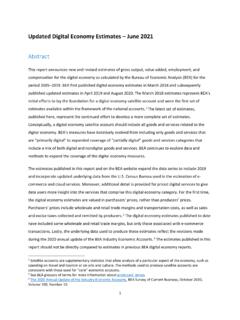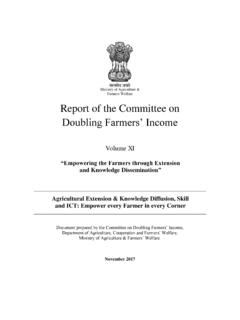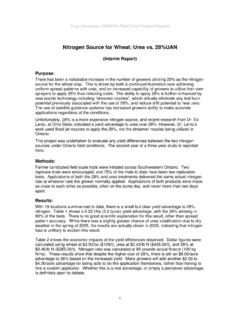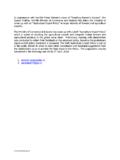Transcription of Measuring the Economy - Bureau of Economic …
1 Measuring the EconomyA Primer on GDP and the National Income and Product AccountsConceptsFrameworkMeasuresInterac tive AccessDecember 2015 Measuring the EconomyA Primer on GDP and the National Income and Product AccountsDecember DEPARTMENT OF COMMERCEP enny S. PritzkerSecretaryECONOMICS AND STATISTICS ADMINISTRATIONKen ArnoldActing Under Secretary for Economic AffairsBUREAU OF Economic ANALYSISB rian C. MoyerDirectorStephanie H. McCulla and Shelly Smith of the National Income and Wealth Division, Bureau ofEconomic Analysis (BEA), Department of Commerce, prepared this R. Moulton, Associate Director for National Economic Accounts at BEA, and Carol , former Chief of the National Income and Wealth Division at BEA provided overall paper introduces new users to the basics of the national income and product accounts(NIPAs). It discusses the Economic concepts that underlie the NIPAs, and it describes the sevenNIPA summary accounts.
2 The Primer also provides a brief overview of the derivation of the NIPA measures and a list of references for further and questions about the NIPA Primer are invited. Please contact BEA s NationalIncome and Wealth Division by e-mail at and the Economy : A Primer on GDP and the National Income and Product Basis of the circular flow of income and expenditures ..2 Economic concepts in the ..2 Exhibit 1 ..3 4 Income ..4 Box An Imputation for the Services of Owner-Occupied Housing ..5 NIPA bl e Income and Outlay Account for an Individual ..7 The Seven NIPA Summary 1. Domestic Income and Product Account ..8 Account 2. The Private Enterprise Income Account ..11 Account 3. The Personal Income and Outlay Account ..11 Account 4. The Government Receipts and Expenditures Account ..12 Account 5. Foreign Transactions Current Account ..12 Account 6. Domestic Capital Account ..12 Account 7. Foreign Transactions Capital Account ..13Ta bl e Summary National Income and Product Accounts, 10 Derivation of the NIPA vintages.
3 14 Current-dollar estimates ..14 Quantity and price , framework, and methods and source data ..16 Quantity, price, and chained-dollar of the estimates ..16 Accessing the NIPA Estimates table arrangement ..17 NIPA table numbering system ..17 Example .. 18 21iiNIPA Primer1 How fast is the Economy growing? Is it speeding up or slowing down? How does the trade deficit affect economicgrowth? What s happening to the pattern of spending on goods and services in the Economy ? To answer these types of questions about the Economy , economists and policymakers turn to the national incomeand product accounts (NIPAs) produced by the Bureau of Economic Analysis (BEA). The NIPAs are a set of economicaccounts that provide information on the value and composition of output produced in the United States during agiven period and on the types and uses of the income generated by that production. Featured in the NIPAs is grossdomestic product (GDP), which measures the value of the goods and services produced by the Economy in agiven time period.
4 GDP is one of the most comprehensive and closely watched Economic statistics: It is used by the White House andCongress to prepare the Federal budget, by the Federal Reserve to formulate monetary policy, by Wall Street as anindicator of Economic activity, and by the business community to prepare forecasts of Economic performance thatprovide the basis for production, investment, and employment planning. But to fully understand an Economy s performance, one must ask not only What is GDP? (or What is the valueof the Economy s output? ), but other questions such as: How much of the increase in GDP is the result of inflationand how much is an increase in real output? Who is producing the output of the Economy ? What output are theyproducing? What income is generated as a result of that production? and How is that income used (to consumemore output, to invest, or to save for future consumption or investment)? Thus, while GDP is the featured measure of the Economy s output, it is only one summary measure.
5 The answers tothe follow-up questions are found by looking at other measures found in the NIPAs; these include personal income,corporate profits, and government spending. Because the Economy is so complex, the NIPAs simplify the informationby organizing it in a way that illustrates the processes taking place. This paper is intended as an introduction to the NIPAs for the new user. It begins by considering the transactionsthat occur in a simple Economy in order to introduce the Economic concepts that underlie the NIPAs. Next, itdescribes the NIPA sectors for which Economic activity is measured and the use of T-accounts to illustrate economicflows. The third section introduces the seven summary accounts of the NIPAs and includes descriptions of the signifi-cant aggregates that they contain. The fourth section provides an overview of the derivation of the NIPA measures,including inflation-adjusted, or real, estimates.
6 The last section provides references, organized by subject area, forusers interested in moving beyond an introduction to more in-depth or advanced information about economicaccounting and the the EconomyA Primer on GDP and the National Income and Product Accounts2 NIPA PrimerThe circular flow of income and expendituresTo better understand the Economy and the NIPAs, con-sider a simple Economy consisting solely of businessesand individuals, as reflected in the circular flow diagrambelow: and the contributions of these flows to the accumulationof fixed assets. The NIPAs provide a framework for presenting actualmeasures of these Economic featured measure of output in the NIPAs is measures the market value of the goods, services,and structures produced by the nation s Economy in aparticular period. While GDP is used as an indicator ofeconomic activity, it is not a measure of well-being (forexample, it does not account for rates of poverty, crime,or literacy).
7 The following are several points to keep in mind whenconsidering the output of the GDP includes market production and some nonmar-ket production. GDP is composed of goods and services that are pro-duced for sale in the market the generic term refer-ring to the forum for Economic transactions and ofnonmarket goods and services those that are not sold inthe market, such as the defense services provided by thefederal government, the education services provided bylocal governments, the emergency housing or health careservices provided by nonprofit institutions servinghouseholds (such as the Red Cross), and the housing ser-vices provided by and for persons who own and live intheir home (referred to as owner-occupants ). However,not all productive activity is included in GDP. Someactivities, such as the care of one's own children, unpaidvolunteer work for charities, and illegal activities, are notincluded because data are not available to accuratelymeasure their Whenever possible, GDP is valued at market prices.
8 The NIPAs value market goods and services usingprices set by the market. This approach provides a com-mon unit of measurement (dollars) that facilitates com-parisons of the various goods and services that make upeconomic activity. Using market values also facilitates theanalysis of the impacts on the Economy of events such asthe implementation of government programs or theoccurrence of natural some cases, market prices do not fully reflect thevalue of a good or service, and may include some types ofservices where an actual exchange has not occurred. Inthese cases, the value of the good or service produced isConceptual Basis of the AccountsIn this simple Economy , individuals provide the laborthat enables businesses to produce goods and activities are represented by the green lines in thediagram above. Alternatively, one can think of these transactions interms of the monetary flows that occur.
9 Businesses pro-vide individuals with income (in the form of compensa-tion) in exchange for their labor. That income is, in turn,spent on the goods and services businesses activities are represented by the blue lines in thediagram above. Economic concepts in the NIPAsThe circular flow diagram illustrates the interdependenceof the flows, or activities, that occur in the Economy ,such as the production of goods and services (or the output of the Economy ) and the income generatedfrom that production. The circular flow also illustratesthe equality between the income earned from productionand the value of goods and services course, the total Economy is much more compli-cated than the illustration above. An Economy involvesinteractions between not only individuals and businesses,but also Federal, state, and local governments and resi-dents of the rest of the world. Also not shown in this sim-ple illustration of the Economy are other aspects ofeconomic activity such as investment in capital (pro-duced or fixed assets such as structures, equipment,research and development, and software), flows of finan-cial capital (such as stocks, bonds, and bank deposits),IndividualsExpendituresIncomeL aborGoods and ServicesThe Circular FlowBusinessesNIPA Primer3 Exhibit 1 Intermediate productIncomeSalesFarmer, wheat$0$1$1 $1$2$3 Baker, bread$3$4$7 Total$4$7$11 imputed from similar market transactions.
10 Imputa-tions measure the value of goods and services that are notfully reflected in market prices. Examples of imputedmeasures in the NIPAs include the value of compensa-tion-in-kind (such as meals provided by employers) andthe value of owner-occupied housing. For more informa-tion on owner-occupied housing, see the box on page 14, An Imputation for the Services of Owner-OccupiedHousing. In cases where there are no similar market transactionsavailable to impute a value of the goods or service beingproduced, the output of these services is valued by esti-mating the costs (such as employee compensation andpurchases of materials and supplies) of producing thegood or GDP is a measure of current production, not sales. In the NIPAs, the measure of output refers to outputproduced in that period, regardless of when that output issold. For example, an automaker may produce a car inone period and sell it in a later period.
![[FR Doc. 85-22841 Filed 9-24-85; 8:45 am]](/cache/preview/9/e/3/b/4/0/3/e/thumb-9e3b403ea4e7f3535028925dd1410980.jpg)
